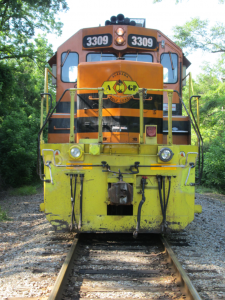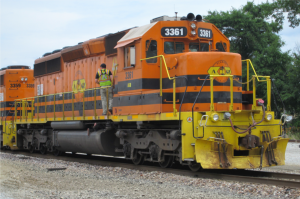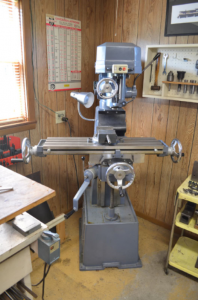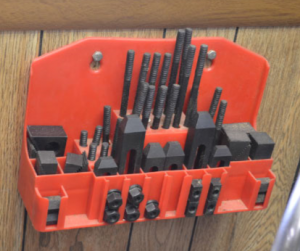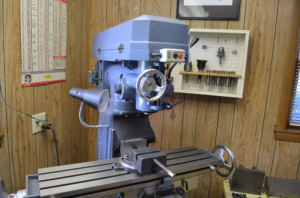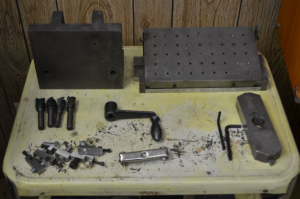Day: July 13, 2016
New Radios for The Railfan Toolbox by Chris Dees
Ask any die-hard, train-chasing foamer what his/her favorite tools to assist in railfanning are, and the answer will probably include “a radio scanner”. The scanner allows railfans to listen in to dispatchers, train crews, and support personnel perform various tasks from running mainline freights and setting up meets to the local wayfreight setting out cars at local industries. Fishermen use fish finders to catch the “big one”; railfans use scanners. For the most part, present railroad communications continue to be in normal analog mode, and receivable by even the most basic of radio scanners. That will likely change in the future.
Recent changes in radio technology have begun to cloud the horizon of railroad related radio communications. The first change was trunking – basically a sharing of a pool of frequencies that are assigned on demand. Thankfully, there is limited usage of trunking in everyday railroad operations, save for some major yard operations and transit authorities in major metropolitan areas.
The other change, digital radio, has posed a more darker, ominous cloud for railfans. Three major types of digital radio formats – all of which are incompatible with each other – are being utilized: Project 25, NXDN, and DMR. Project 25 is most commonly used in public safety communications for fire, EMS, and law enforcement; Hopkins County and Madisonville utilizes this type of digital format for their public safety operations. NXDN, or Nexedge, is the proposed format to be utilized by railroads; Christian County and Hopkinsville utilizes this type of digital format for their public safety operations. DMR, or Digital Mobile Radio, is becoming the de facto standard of digital radio in the business band segment of two-way radio as a cheaper alternative to Project 25.
Until recently, Project 25 was the only digital format that was available in radio scanners, with other modes requiring intensive scanner modifications along with utilizing a PC to process and decode the audio. A rather expensive option, the AOR DV-1 radio at $1200, was introduced in 2015 but with several limitations that didn’t allow for ease-of-use in the field. The other option was to purchase an actual NXDN or DMR radio and get it programmed – again not an easy or inexpensive option.
At this year’s Dayton, Ohio Amateur Radio Convention known as Hamvention, two major announcements from Uniden and Whistler Group brought great news to scanner users regarding DMR and NXDN. First, Uniden Corporation announced a soon-to-be-released upgrade to its BCD436-HP and BCD536-HP scanners that will allow reception and decoding of DMR. Then, Whistler Group announced two new models, the TRX-1 and TRX-2 radios, which will also allow reception of DMR, with NXDN decoding noted as being under development. Regardless of brand loyalty, these two announcements have given the railfan community a sigh of relief in regards to the future switch to digital radio communications by the industry, regardless of the format. These new developments, however, do come with a larger price tag than your run-of-the-mill analog scanner, with prices in the $300 to $500 range, but with tons of features that will continue to make the scanner a key tool for any railfan.
Keith Kittinger shares some progress on his HO L&N layout. To watch a video of a train crossing the new span click below. More photos under the video.
“A bridge across the Mississippi was necessary to connect the Chicago & Rock Island and the Mississippi & Missouri railroads. The Mississippi had not yet been spanned, and the immediate reaction to the proposed railroad bridge was that it would be a hazard to navigation. However, the bridge was built, and it was officially opened on April 21, 1856. On the evening of May 76 the steamboat Effie Afton, which usually plied the New Orleans-Louisville run, cleared the open draw span then veered aside, turned around, rammed one of the piers, and suddenly and suspiciously burst into flames. The case of the bridge soon became one of railroad advocates versus steamboats advocates. The latter felt that even a single bridge would set an unfortunate precedent and soon there would be bridges every 40 or 50 miles along the length of the river. The railroad’s case, argued by Abraham Lincoln, went one way then the other in successive courts, but in 1866 the U. S. Supreme Court held for the railroad. Several other railroads immediately applied to bridge the Mississippi at other locations.”
Credits: Cartoon from Railfan & Railroad Magazine, March 2009, quoted paragraph from the: “Historical Guide to North American Railroads” by Kalmbach
Results of the June 2016 Chapter Photo Contest by Jim Pearson. There were a total of 8 entries for this contest from four different members. While all the photos were of great quality our judge, Jim Pearson, has narrowed down the field to the top three winning photographs.
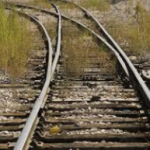 Greetings all! I hope you will join us Monday, June 20, 7pm, here at our home at 1025 Lakewood Dr, Madisonville. As President Bill stated above, Blair’s family will be supplying the burgers for my grill Monday so come hungry. Just bring a lawn chair and all the other stuff will be provided. If you’d like to take a dip in the pool, feel free to come early at 6. I believe happy hour will begin at that point as well.
Greetings all! I hope you will join us Monday, June 20, 7pm, here at our home at 1025 Lakewood Dr, Madisonville. As President Bill stated above, Blair’s family will be supplying the burgers for my grill Monday so come hungry. Just bring a lawn chair and all the other stuff will be provided. If you’d like to take a dip in the pool, feel free to come early at 6. I believe happy hour will begin at that point as well.
Informal Program: If you have any G gauge equipment you’d like to run on the garden tracks, feel free to bring it along. Bob McCracken is scheduled to have his live-steam Shay here and it’s always a treat to see it chugging among the flora. Keep in mind the track work can be like a maintenance-deferred short line so no guarantees we’ll be derailment free. RJ Corman is on standby.
Directions if needed: From South Main St (Hwy 41 S), take SR 70/McLaughlin/Princeton Rd west. Turn right on Lakewood Dr., just past the Elks Club. Take the first left (which remains Lakewood Dr.). Go right as the road elbows, our drive way is the first on the right. Blue house with a yellow front door, RR crossing sign in the back yard.
Hope to see you here!
Bill
It seems like we were just meeting in Hopkinsville yesterday and here it is– we have a meeting in just a few days. Talking about the meeting, I hope everyone remembers that we are meeting at Bill Thomas’s home this month. Blair’s mom has informed him that he will be pressing out half pound hamburgers for Bill Thomas to grill. This is one meeting I don’t want to miss. Our new member Will Kling as stepped forward and will have the program for this month. Way to go Will.
I hope everyone had an opportunity to get out with a camera and get some pictures of trains or railroad related items for the photo contest we had last week. Each member can enter two (2) pictures of his or her choosing. All photos have to be turned in to Jim Pearson no later than Thursday June the 16th.
I know Blair Terry and myself had a very special opportunity to get some photos of a locomotive in Virginia last week end. I hope all of our membership had a chance to get out and take pictures of railroading in general. Remember the top three pictures from each contest will go toward making up a club calendar for 2017. Our next photo contest is August 6-13, this gives you time to get out and find a good location.
We are still looking for members to sponsor “Railfanning” events for June, July and August. I you think you know of an area with food and facilities close by you might want to sponsor. These are great events and it gives our membership a chance for relaxation and have fellowship close to a railroad environment.
We have not had a raffle for the last two meeting because of the lack of things to raffle. I need for the membership to dig around in their store of railroad memorabilia for things to raffle in the June meeting.
Bill Farrell, President

